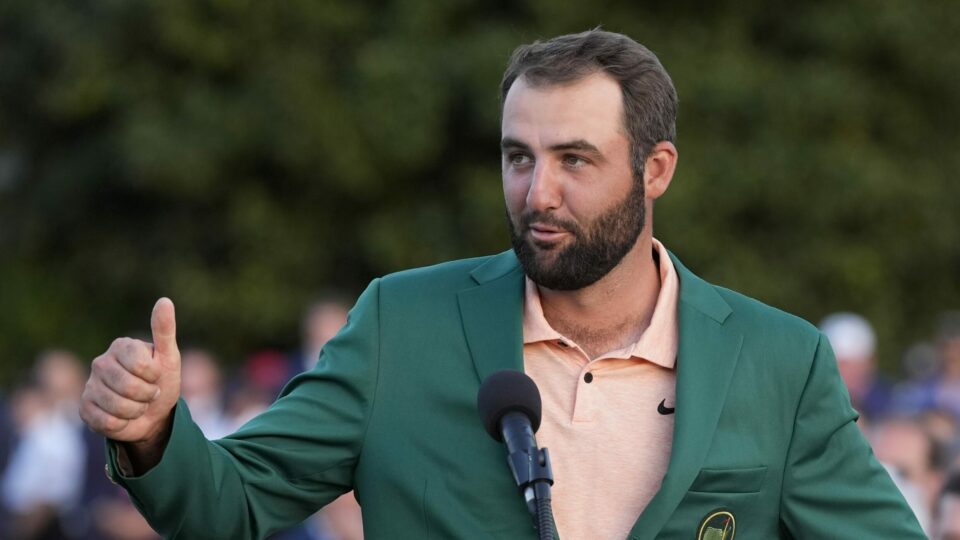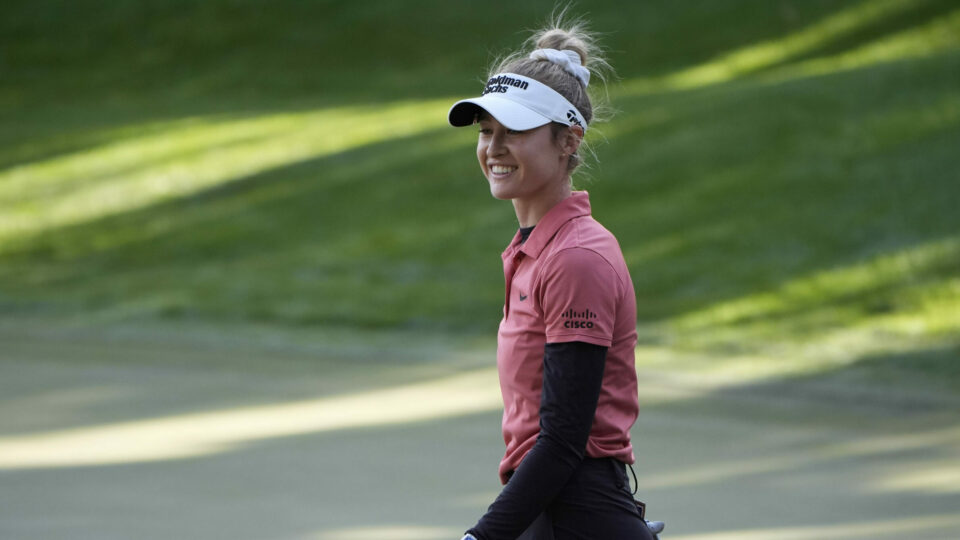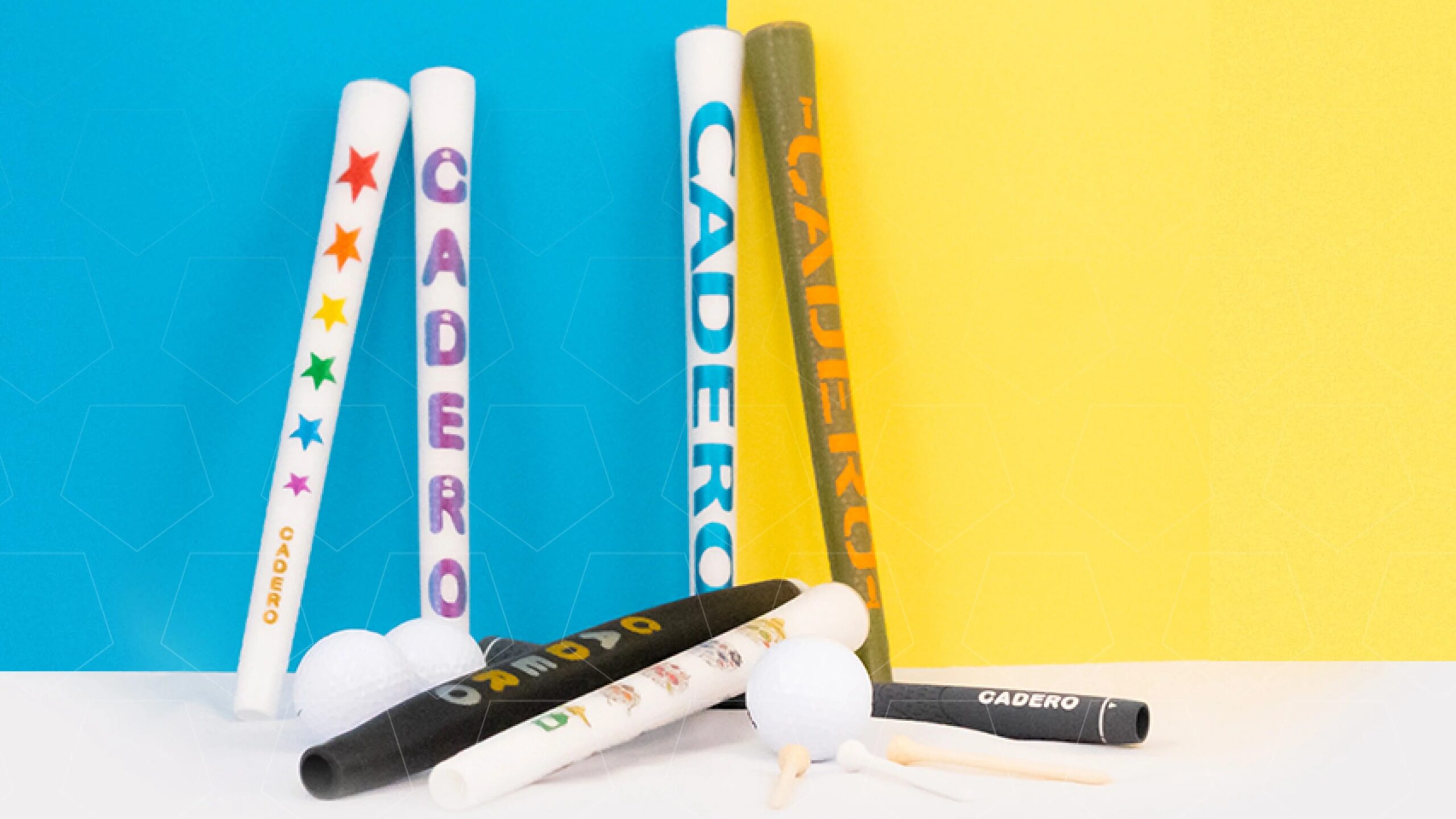
Here’s a question for you: how can you realistically hope to reduce your handicap if you don’t seriously practice with the one club you use most often in every round of golf! It’s time to change. Get yourself a putting mirror, like the one Rory is using here, and commit yourself this season to working on the same drills and practice routines that I use with one the world’s most exciting young golfers. The return on your investment will be worth it…
Mirror, mirror…
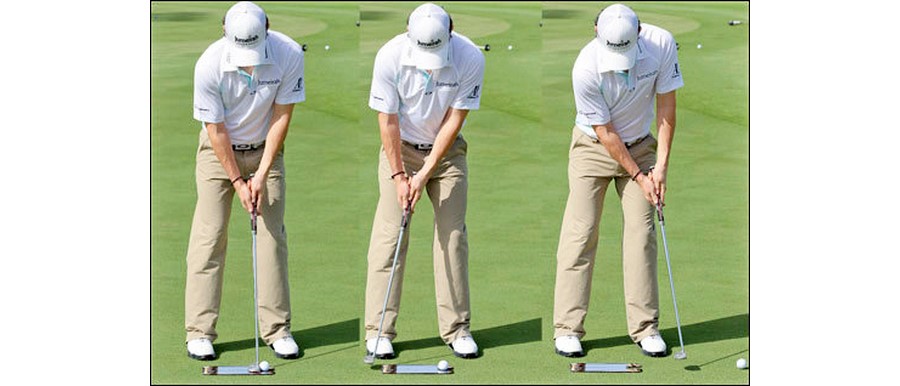
Stay focused – fixing your eyes on the back of the ball and keeping your head still ensures that you ‘stay in the putt’ and keep the putterface running square to the path of your stroke
If I had to choose just one training aid for the players I coach to use regularly in their practice routines it would have to be a putting alignment mirror. I believe it is the simplest and most effective piece of equipment you can buy when it comes to working on all aspects of your aim, set-up and stroke. The graphics on the top of the mirror have certainly helped Rory to make consistent both his eye position and the square alignment of the putterface behind the ball on every putt. It is easy to use for a quick practice indoors at home or in the hotel room as well as on the putting green.
Non negotiable…
That the putterface is aimed square to the initial line on which you want to roll the ball is one of the ‘non-negotiable’ elements of good putting technique. Simple, you might think, but you would be surprised at the number of leading professionals I have worked with who fail to take care of this most basic of laws at the set up. It’s that old issue of perception versus reality – what we think we are doing in golf is often a long way from what we are actually doing. Which is why it is vital you check this element regularly. Rory uses the solid transverse lines directly behind the ball as his reference point. He is then able to see the line directly in front of the putter blade, which is at 90 degrees to the target. Rory knows that if he strikes the ball with an open or closed face, not only will it fail to start online but the unwanted sidespin will further be evident in the inconsistency of roll.
Precision alignment to the target – that’s Rule No. 1
The first steps you see Rory running through here are designed to confirm perfect alignment of both his body, eye-line and the putter face. We generally like to start off a practice session with a straight 10-foot putt – Rory will get down behind the mirror to check that the centre line is aimed exactly down the target line. By using the alignment guides on the mirror, Rory can then check his eye position (for him just inside the middle line), square the putterface to the target line and confirm that the key body lines (feet, hips and shoulders) all run parallel.
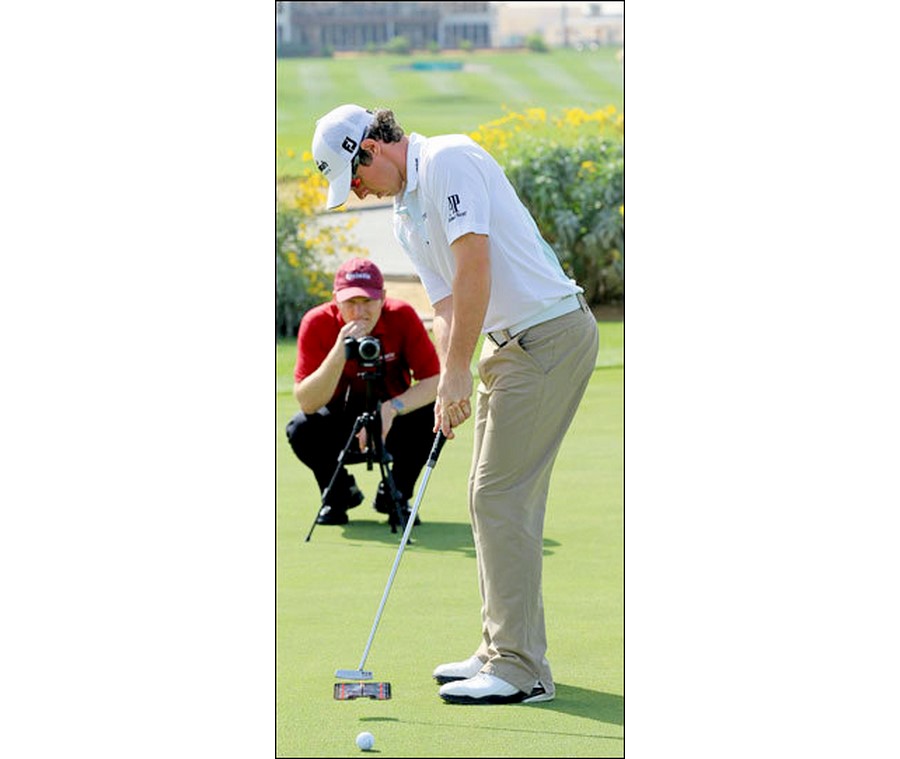
With the mirror fixed in place, aimed at a straight putt, I would expect Rory to hole putt after putt from 10 feet. And one of the vital checks I make as he hits these putts is that Rory’s eye-line is maintained from the set-up all the way to impact – this helps to ensure that he ‘stays in the putt’. (You don’t ever want to peek too early – that throws the whole stroke off line). I also like to film all of the putts and drills so I can review them in the Quintic video analysis software; we have created a substantial library of good putts and this is always very useful to refer back to.
Once Rory is confident and rattling in the majority of the putts he hits I then remove the mirror and continue to film his stroke from the same spot on the green. Doing this introduces clubface alignment into the equation – i.e. Rory has to square the face without the benefit of the lines on the mirror. If the percentage of holed putts drops below 80% we need to address the failure of being able to repeat correct alignment.
Once Rory is achieving 90% we repeat the drill with varying length putts, and finally we find a slope and repeat the drill with breaking putts. This drill examines and improves Rory’s pace control, which has to be correct for the ball to take the break and find the hole.
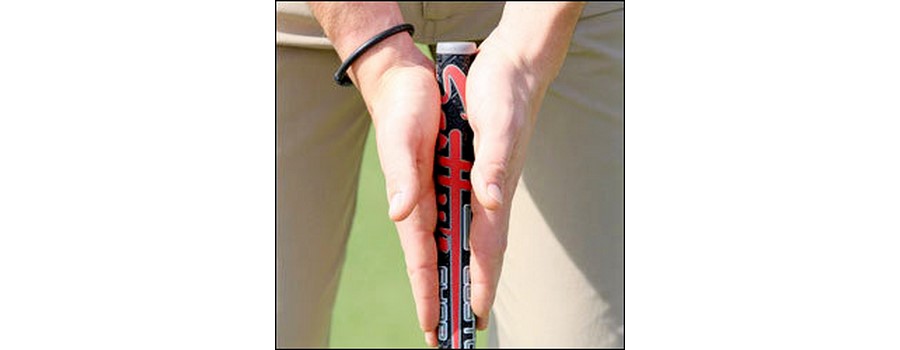
We work constantly on stance and posture to make sure that Rory fulfils what I regard as the fundamental laws of putting: putter-face square to the line of the putt, body and eye-line parallel to the same line. It’s then a case of repeating efficient motion, and the palmtogether drill you see here is one that helps to reduce any tendency to ‘flick’ the right hand through impact. It’s also great for tempo, as you cannot strangle the grip with this hold and so the player is inclined to stay relaxed and produce a smooth motion. Rory uses this drill to highlight and feel the way the shoulders and arms work together as a unit, and not independently of each other, as hinders a lot of golfers…
Improve your tempo: work the shoulders together with the palm-grip drill
One of my main aims when working with golfers is for them to be aware of the difference between a good stroke and a poor stroke. This has been the basis of the work I have been doing with Rory over the last two years. Tee to green, Rory has a very good understanding of what makes the ball go where it goes. But on an 8-foot putt that just misses, say, outside the left edge, he wasn’t so sure. So, by eliminating variables such as green reading, alignment, squaring the clubface etc., Rory can start to build (and indeed has done) an awareness of good and poor strokes.
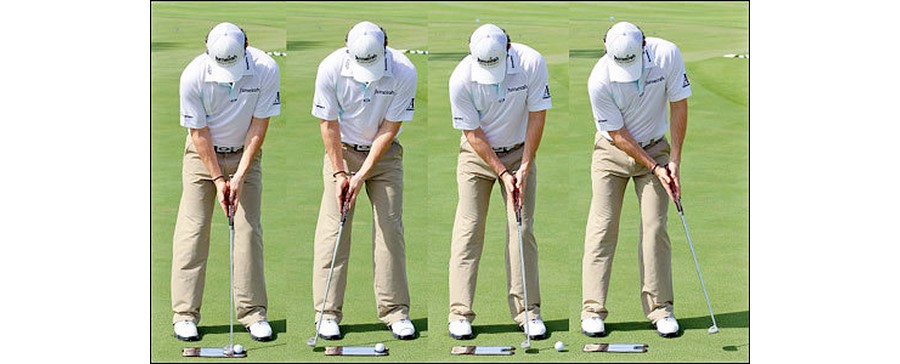
‘Eye Position must be Parallel’ – this is vital and Rory uses the mirror to check that his eye line is parallel to the target line (especially important on breaking putts where there is a tendency to look towards the target instead of correctly down the line of your aim). Again, using a putting alignment mirror simply eliminates doubt – it teaches you to focus on the line upon which you want to start the ball rolling, and not on the final destination (i.e. the hole). And so it reduces any tendency you may have to manipulate the putter towards the hole – a common fault.
For Rory to improve his understanding, awareness and feel then he has to be honest with himself; if a putt misses to the left, I need him to understand what caused it to miss left – “I felt the putter face closing” or “I felt my shoulders open and pull the putt”. In other words associating feel with real.
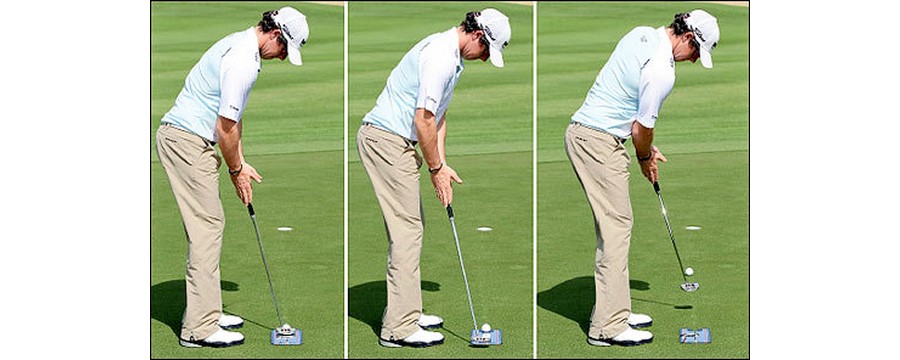
This palm-together drill you see Rory working on is a great way to developing and trusting swing mechanics. Placing your hands on the grip like this helps to eliminate unwanted wrist ‘flip’, so allowing the shoulders, arms and wrists to work together as one unit.
Tempo is the secret to feel – flow your stroke for a better strike
Finally, let me leave you with a switch exercise that can benefit two vital scoring shots – the ‘lag’ putt and basic chip shot. Both of these strokes require a natural flowing action to make a consistently solid strike on the ball, and working on them alternately can benefit both.
So, around the practice green, Rory might take halfa- dozen balls and roll some putts from the fringe to a hole cut 20 paces away, the emphasis on finding a flow and a rhythm that enables him to roll each of the balls a perfect distance. With his regular putting grip, he stays relaxed and lets his arms flow with the motion of his body to accelerate the putter smoothly through the ball.
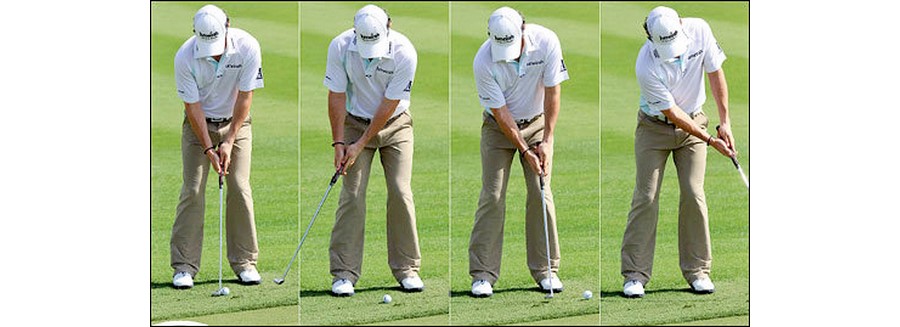
Then, having stroked those six putts he switches to a chipping club – in this case a 7-iron – and simply tries to recreate that same flowing rhythm with a greenside chipping action. As I explain to Rory, the drill needs to be instinctive and natural; the secret is not to think about the club in your hands but instead focus on visualising the shot you want to play and react to what you see as you create a repeating motion.
Doing this has made a big difference to the quality of Rory’s pace control on these shots over the last 12 months. It is all about visualising the ball’s journey on the green and working between clubs to be more instinctive and reactive. Weighing up shots of between 10 and 30 paces, alternate between your chipping clubs, 7-iron to wedge – and of course your putter.
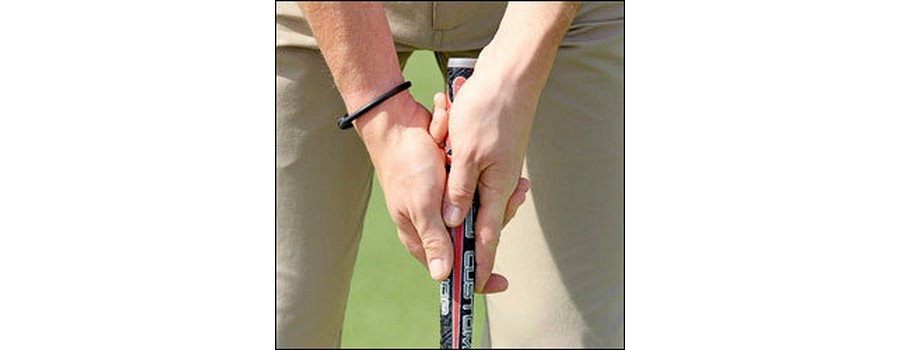
Through the first part of this lesson the emphasis was on the importance of using a mirror to confirm all aspects of alignment with a view to repeating a perfectly square impact position and rolling the ball on your intended starting line. That’s all you can ever hope to do with every putt you face and the more often you repeat the sort of routines you have seen Rory work on here the more often you will take that level of precision out on to the golf course…and hole more makeable putts. From longer range, improving your sense of flow as you swing the putter back and forth will help you to strike lag putts more solidly – key to distance control.
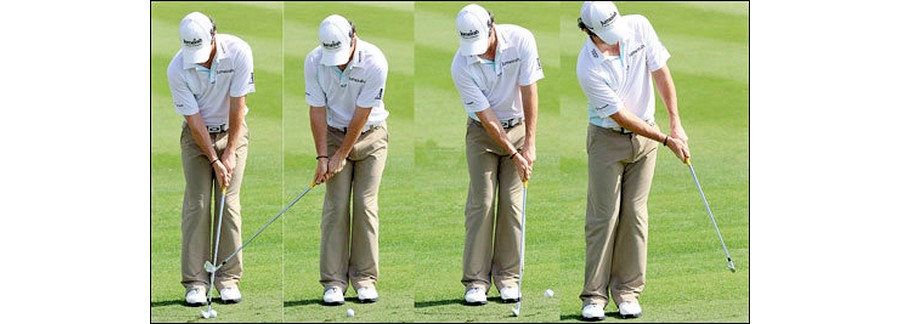
And that same quality is vital in the chip and run shot, too, as you look to land the ball a specific distance and have it roll across the green just like a putt. So do what Rory does, and work on the skills that are directly related to shooting lower scores.
Originally published in 2011

